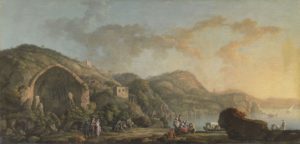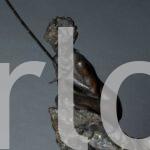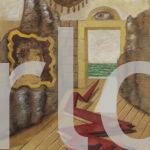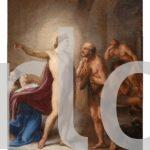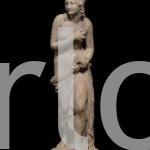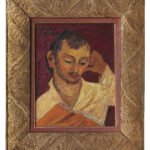| NOT AVAILABLE
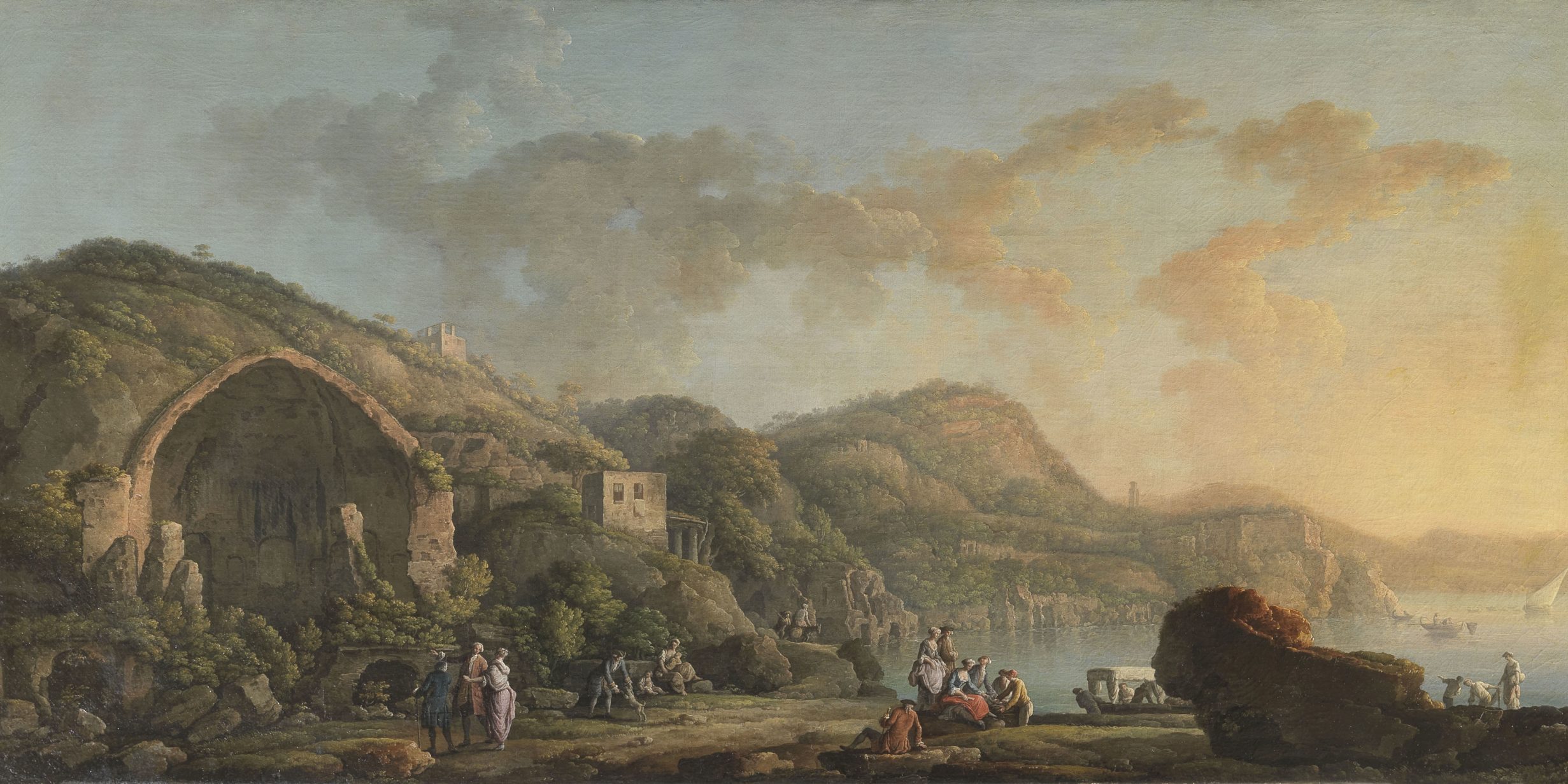
(Napoli, attestato tra il 1751 e il 1758)
View of Baiae with the Temple of Diana
Oil on canvas, 80 × 159 cm
Signed lower center: «Carlo Bonavia p.»
A condensation of the interests stirred in travellers on the Grand Tour by the territory of the Kingdom of Naples—nature, archaeology, folklore—this enchanting pendant presents two views characteristic of the Bonavia repertoire. The consistent and stylistically compact production of the painter, circumscribed to the period—on the sole basis of his dated works in absence of personal data—between 1751 and 1788, and to be understood as the development of the local post-Rosian tradition embodied by such figures as Leonardo Coccorante or Michele Pagano (a development undoubtedly prompted by contact with foreign genre painters), consists almost exclusively, in fact, of representations of the coast and the countryside around Naples, mostly combined with imaginary elements.
In the first of the two canvases, the subject is a transfiguration in picturesque key—i.e., according to an emotive conception of landscape in line with the contemporary models of Claude-Joseph Vernet (Bonavia’s chief point of reference)—of one of the most famous monuments of the classical age, representative of the Phlegraean area, the thermal baths rotunda mistakenly called the “temple of Diana” by the local antiquarian tradition (see Mazzella 1591, p. 97: “Not far from the temple [of Venus] one can see another of great magnificence, and it is almost half intact, which many believe was consecrated to Diana Lucifera because they read a few years ago on a marble cornice these words, Diana Lucifera. And more was conjectured from the many marbles that are around there, where are sculpted dogs, deer and mullets, all of which are animals sacred to the goddess […]”).
A variant of the canvas in question, ‘cut’ to the temple alone, is in the Molinari Pradelli collection (Giuseppe Porzio, in Le stanze delle muse 2014, pp. 288–289, no. 99); but the same building also recurs in another fortunate composition by Bonavia, which alternatively proposes a central view: mention should be made at least of the signed and dated 1757 version belonging to the National Trust, Basildon Park (inv. No. 266902), previously on the London antiques market (Constable 1959, pp. 22 [fig. 4], 26, no. 5, reported at Agnews by Spinosa 1987, p. 157, no. 276), and the other belonging again to the Carlo Virgilio Gallery (Nicola Spinosa, in A picture gallery 2012, pp. 68–71, no. 20).
No less iconic is the second image of Baia, centred on the looming bulk of the Aragonese castle (renovated, however, in the viceroyal period) and on a second archaeological find, dubbed temple of Venus by sixteenth century scholars, following the discovery of an effigy of the goddess (Mazzella 1591, p. 196), but—like that of Diana—the remains of a thermal complex of the age of Hadrian. Outstanding among the versions of this view is certainly the replica dated 1758, in similar format but with slight differences especially in the small figures that animate the marina, in the collections of the St Petersburg Hermitage (inv. no. ГЭ-10119).
The success of the two conceptions is also evinced by the faithful printed versions done by Antoine Cardon in plates XI and XII of the Raccolta delle più interessanti vedute della città di Napoli e luoghi circonvicini published in Naples around 1764–1766 (Negro Spina 1989, pp. 70–73); in the engravings, however, the two ruins are called “temple of Mercury” and “of Diana” respectively.
As for the chronology of the two works, the author’s serial practice makes precise dating difficult; However, the watercolour transparencies of light seem to me to bring them close to the period of the barely known View of Santa Lucia with the Panatica in the Museo della badia di Cava de’ Tirreni of 1762, which enables re-attribution to Bonavia of the more famous version in the Museo di San Martino in Naples (inv. no. 5196), variously designated to Pietro Fabris and more recently even to Thomas Jones (Abbate 2009, p. 290).
Giuseppe Porzio
The Carlo Virgilio & C. Gallery searches for works by Bonavia Carlo (attestato tra il 1751 e il 1758)
To buy or sell works by Bonavia Carlo (attestato tra il 1751 e il 1758) or to request free estimates and evaluations
mail info@carlovirgilio.co.uk
whatsapp +39 3382427650
